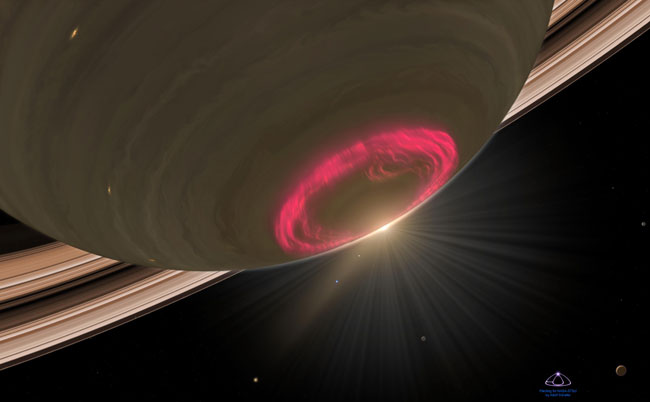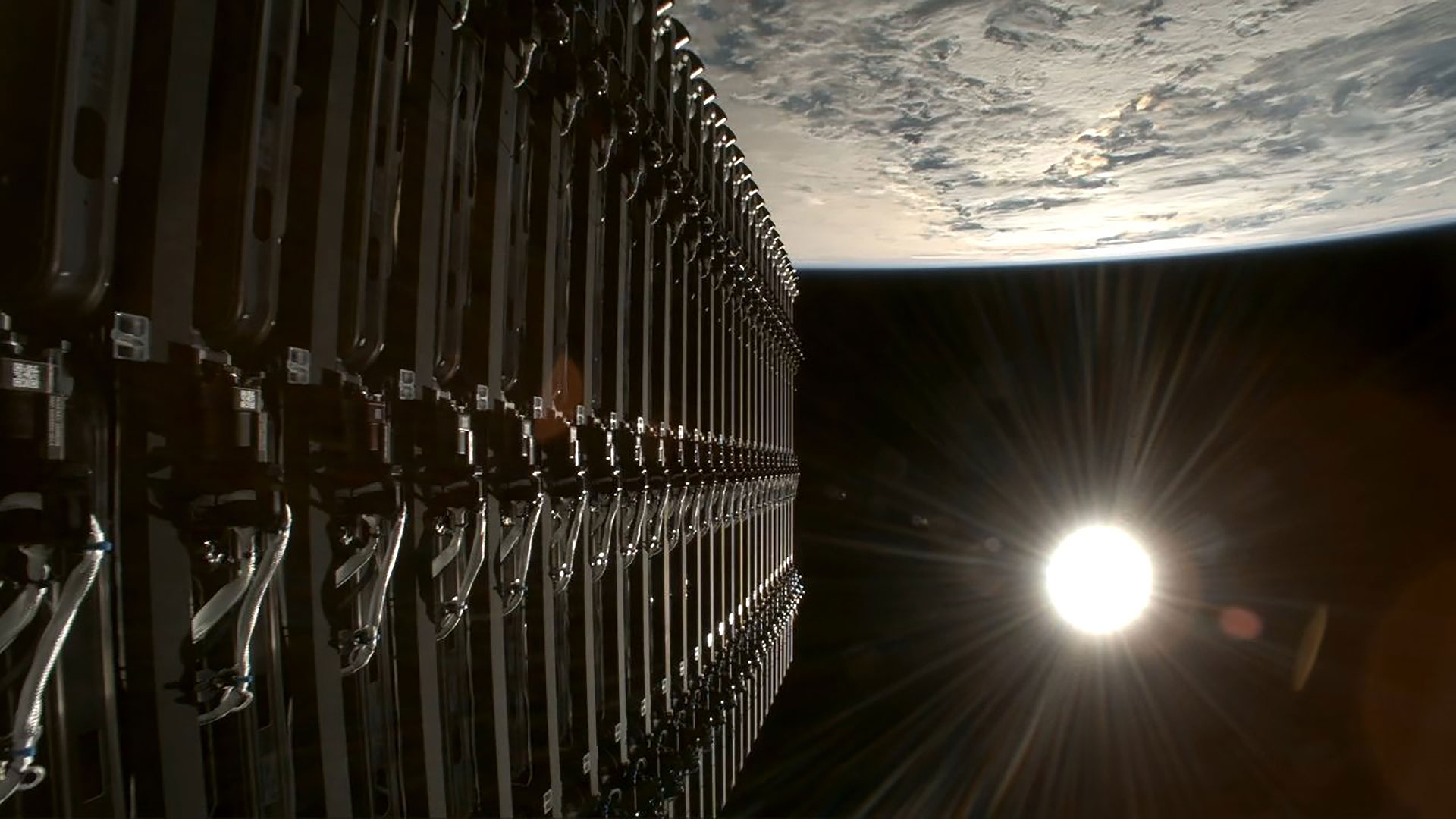Hot New Mystery Surrounds Saturn

For years astronomers have known that the upper atmospheres of Saturn and other giant planets are hotter than can be explained by absorbed sunlight. Today the mystery deepened.
The phenomenon has long been blamed on a mechanism similar to what creates the aurora, or Northern Lights on Earth. On Earth, magnetic energy in the magnetosphere drives the aurora and heats the upper atmosphere.
The giant planets are known for spectacular auroras at their polar regions. Scientists figured that heat generated by the auroras was blown toward the equator by some unknown process.
But a new calculation reported in today's issue of the journal Nature finds that this mechanism, if at work on Saturn, would actually cool the upper atmosphere at the lower latitudes (closer to the equator). Scientists will have to go back to the drawing board to figure out what's really heating things up.
"This unexplained 'energy crisis' represents a major gap in our understanding of these planets' atmospheres," the scientists write.
"We need to re-examine our basic assumptions about planetary atmospheres and what causes the observed heating," said study team member Alan Aylward of the University College London.
Some as-yet-unknown direct heating mechanism is possibly at work, the scientists speculate. One possibility: the breaking of "buoyancy waves" generated in the lower atmosphere.
Breaking space news, the latest updates on rocket launches, skywatching events and more!
Figuring it all out could help researchers model the future of Earth's atmosphere.
"Studying what happens on planets such as Saturn gives us an insight into what happens closer to home," Aylward said. "Planets can lose their atmospheres as we see with Mars. Do we completely understand how this happens? Are there mechanisms heating the gas and causing it to escape that we do not yet fully understand? By studying what happens in other atmospheres we may find clues to Earth's future."
- Earth's Weirdest Weather
- Wildest Weather in the Galaxy
- The Solar System's Biggest Light Shows
- Top 10 Unexplained Phenomena
- The Strangest Things in Space

Rob has been producing internet content since the mid-1990s. He was a writer, editor and Director of Site Operations at Space.com starting in 1999. He served as Managing Editor of LiveScience since its launch in 2004. He then oversaw news operations for the Space.com's then-parent company TechMediaNetwork's growing suite of technology, science and business news sites. Prior to joining the company, Rob was an editor at The Star-Ledger in New Jersey. He has a journalism degree from Humboldt State University in California, is an author and also writes for Medium.
